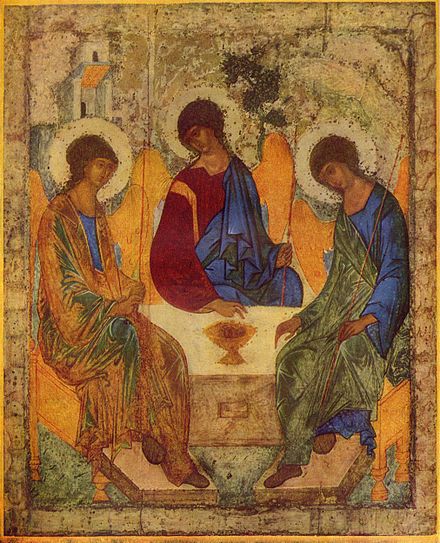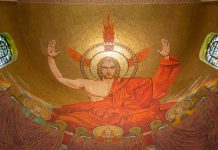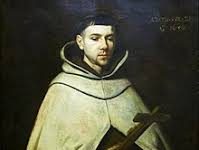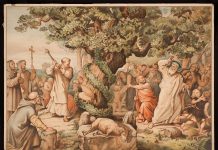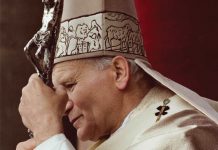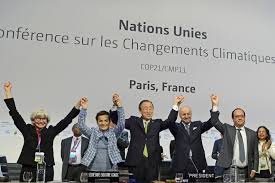In light of yesterdays’ Solemnity celebrating the Most Holy Trinity, a few words on this central teaching of our Faith may be in order. The doctrine of the Trinity is unique to the Christian Faith, developed over the first centuries of the Church and clarified by the first ecumenical Councils. The Son reveals the Father, and in turn the Holy Spirit. God the Father is not ‘alone’, but lives in a community of Persons, self-sufficient and perfect in the fullness of Being and Actuality.
Saint Thomas explains this using the notion of distinction in God, which is itself is based upon the relations of God to Himself. Since there cannot be ‘accidents’ in God – which would imply potency – these relations must also be the fullness of the divinity. This the Council of Nicaea clarified, declaring the Son to be ‘God from God, Light from Light, true God from true God, consubstantial – homoousios – with the Father’. The Holy Spirit, as well, is the ‘Lord, the Giver of Life’, Who also is ‘adored and glorified’.
These relations within God constitute the three Persons of the Trinity. As Thomas puts it, it is not as though there are three Persons related one to the other. Rather, the three Persons are the relations themselves. The Father is subsistent Paternity, the Son, filiation and the Holy Spirit the procession from them both.
We may also use the analogy of Saint Augustine, that the Son is the Father’s perfect reflection and knowledge of Himself – I and the Father are one and he who has seen Me has seen the Father – while the Holy Spirit is the love between them both. Whether the artistic representations of the Trinity are helpful, especially depicting the Father as an old man with a white beard, we will leave for another day).
In whatever way we may ‘visualize’ the Trinity, in the end, it’s a mystery, but one about which we know something through God’s revelation in the Son. All our prayer should be Christocentric and Trinitarian, through the Son, in the Holy Spirit, to the Father. But it’s not just about what we know or how we pray, for we should also mirror our own lives on this communion of love within God. The Trinity provides the perfect model of all of our own relations with each other. These relations, in turn, are the basis of our own personhood, for we too are defined, if you will, by our relationships, whether biological or spiritual (and they should all in the end be spiritual in some way): As father, mother, son, daughter, brother, sister, friend, teacher, mentor, disciple. If we live well in these various communities, with God and with each other, we will become apt to share the divine life of the Trinity with God forever, in that communion of love and knowledge, whose beatitude and glory far surpass our imagination and understanding.
For this, God created us, and to this we are called. The Holy Trinity wills our salvation infinitely more than we do. So have hope, dear reader. To paraphrase Saint Paul, the travails of this life are as nothing with the eternal life that awaits.

